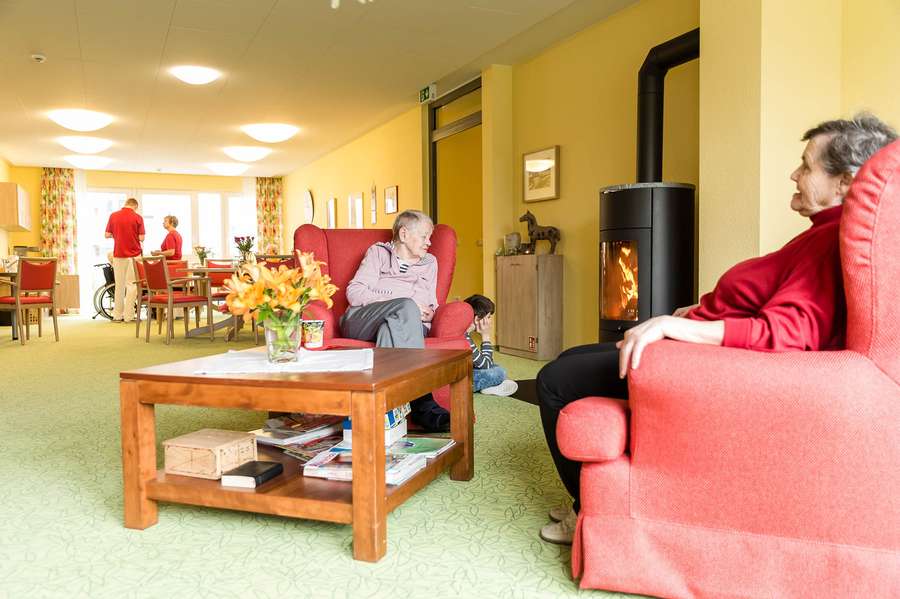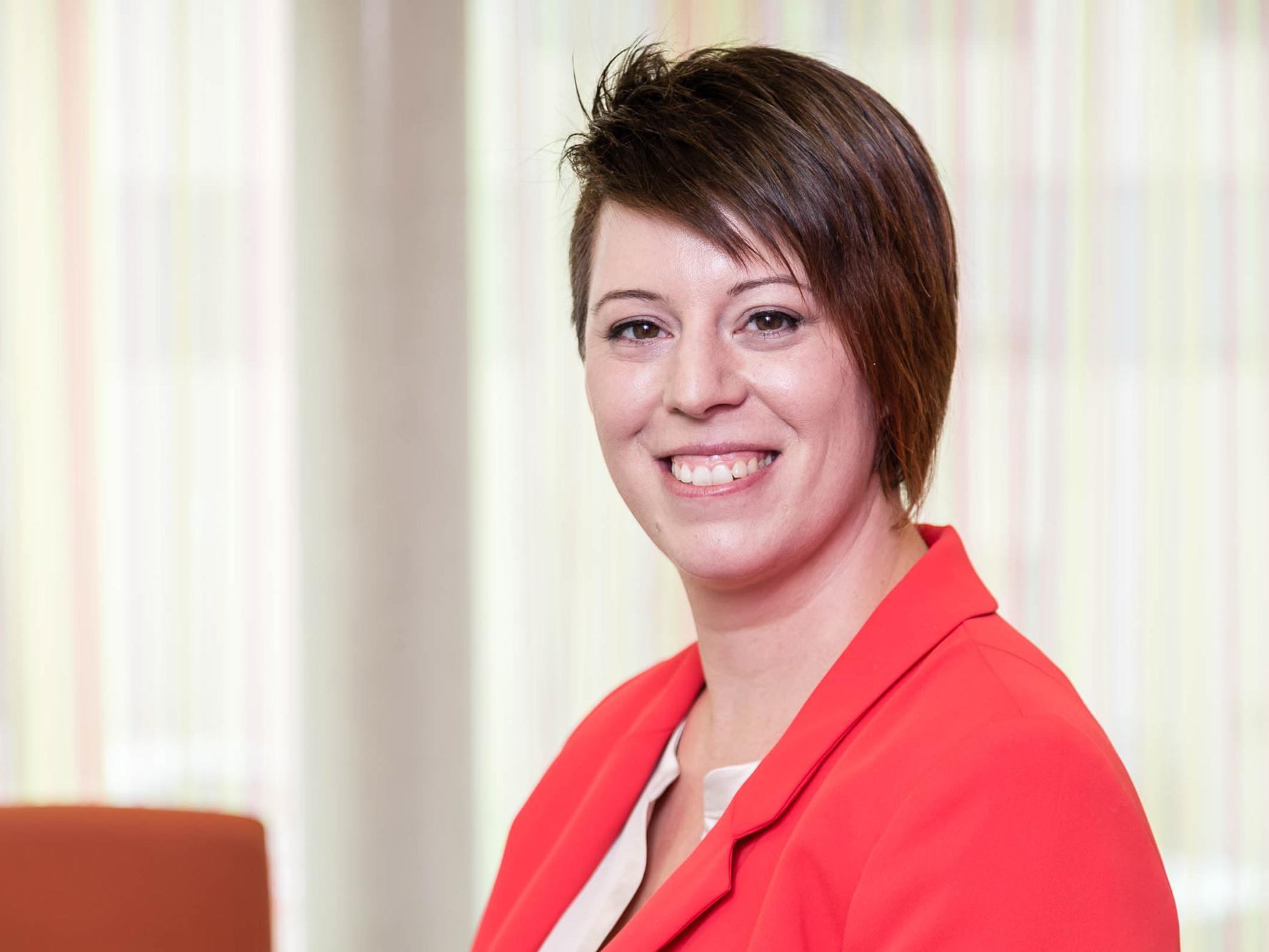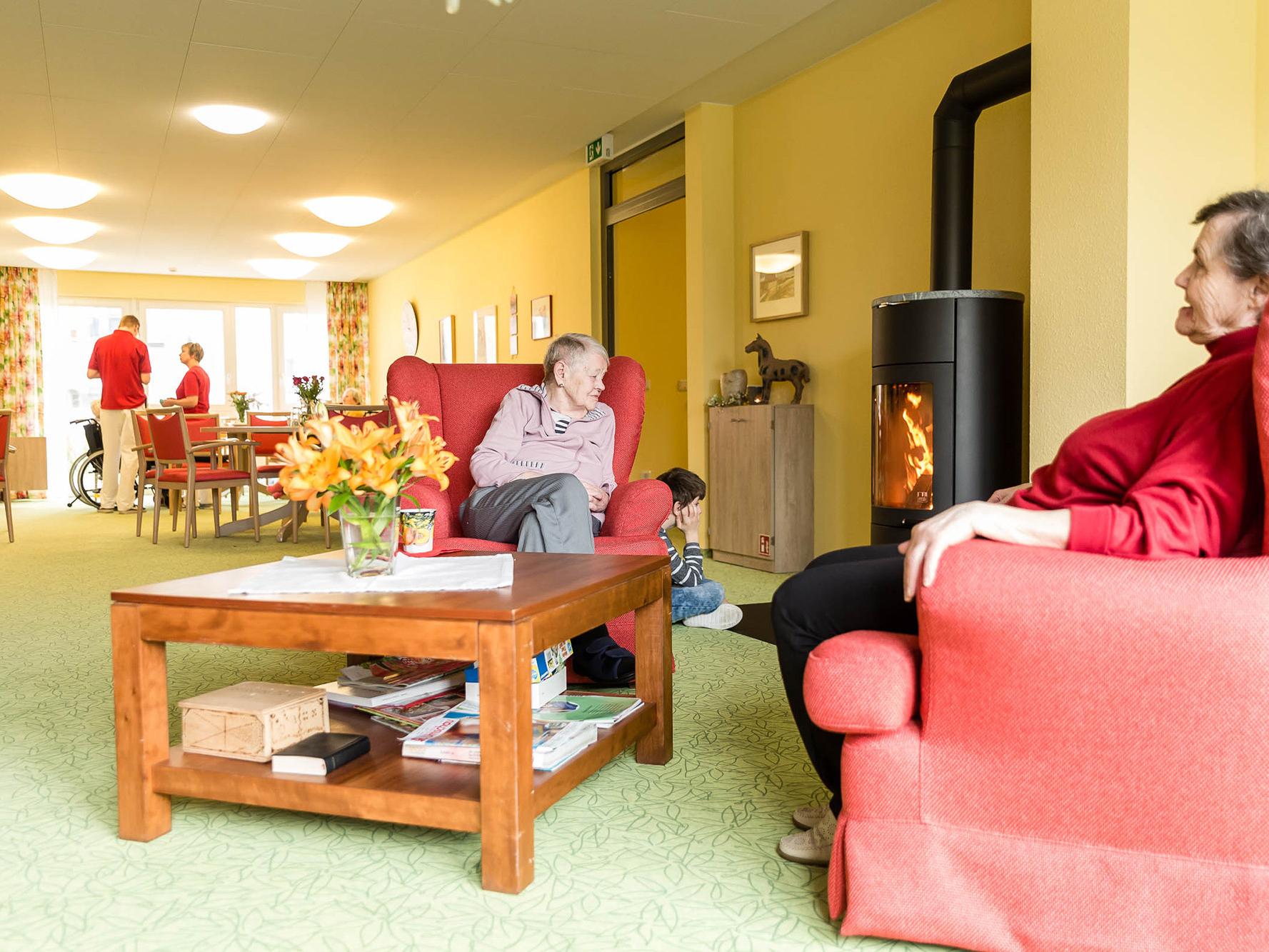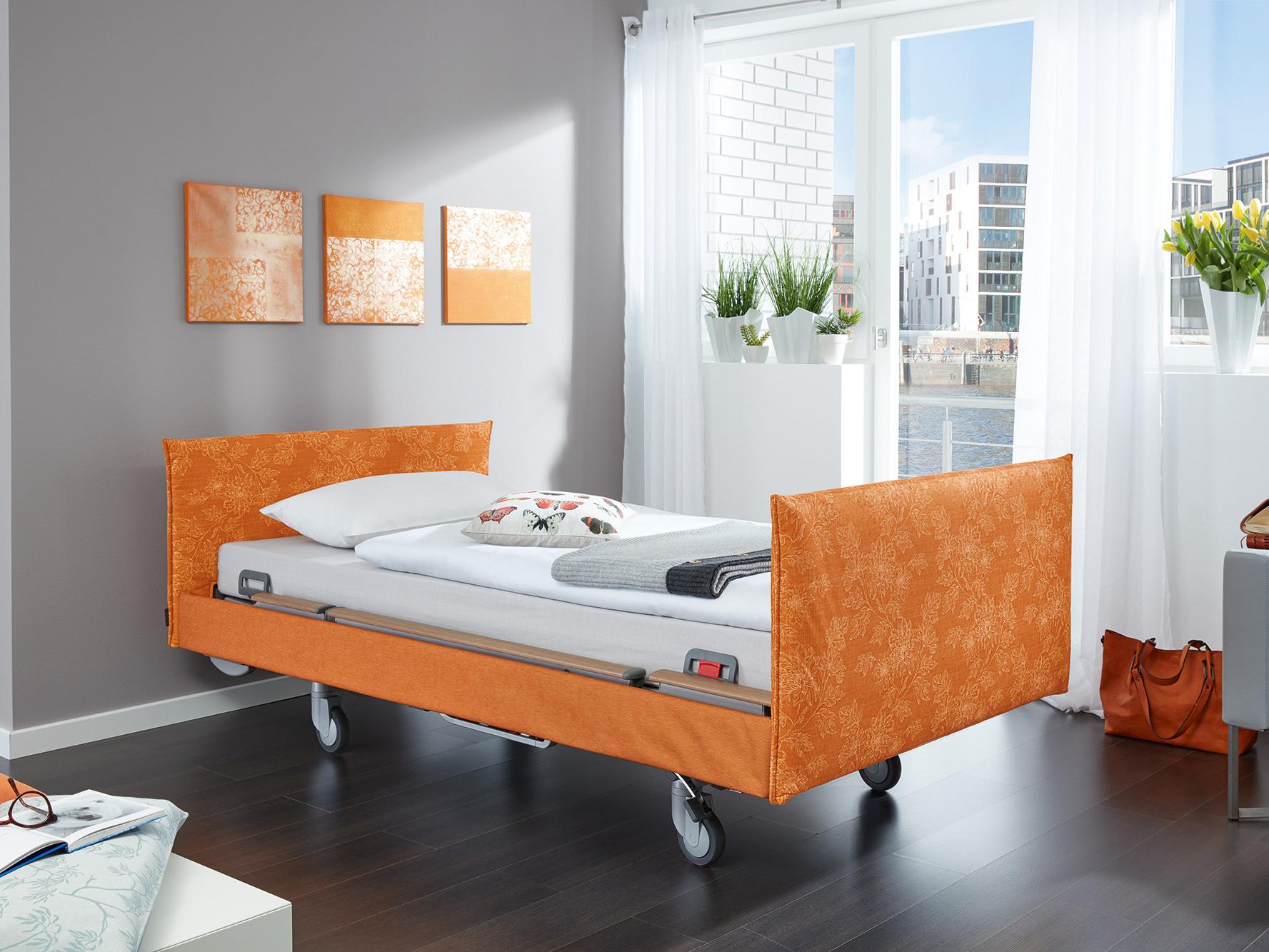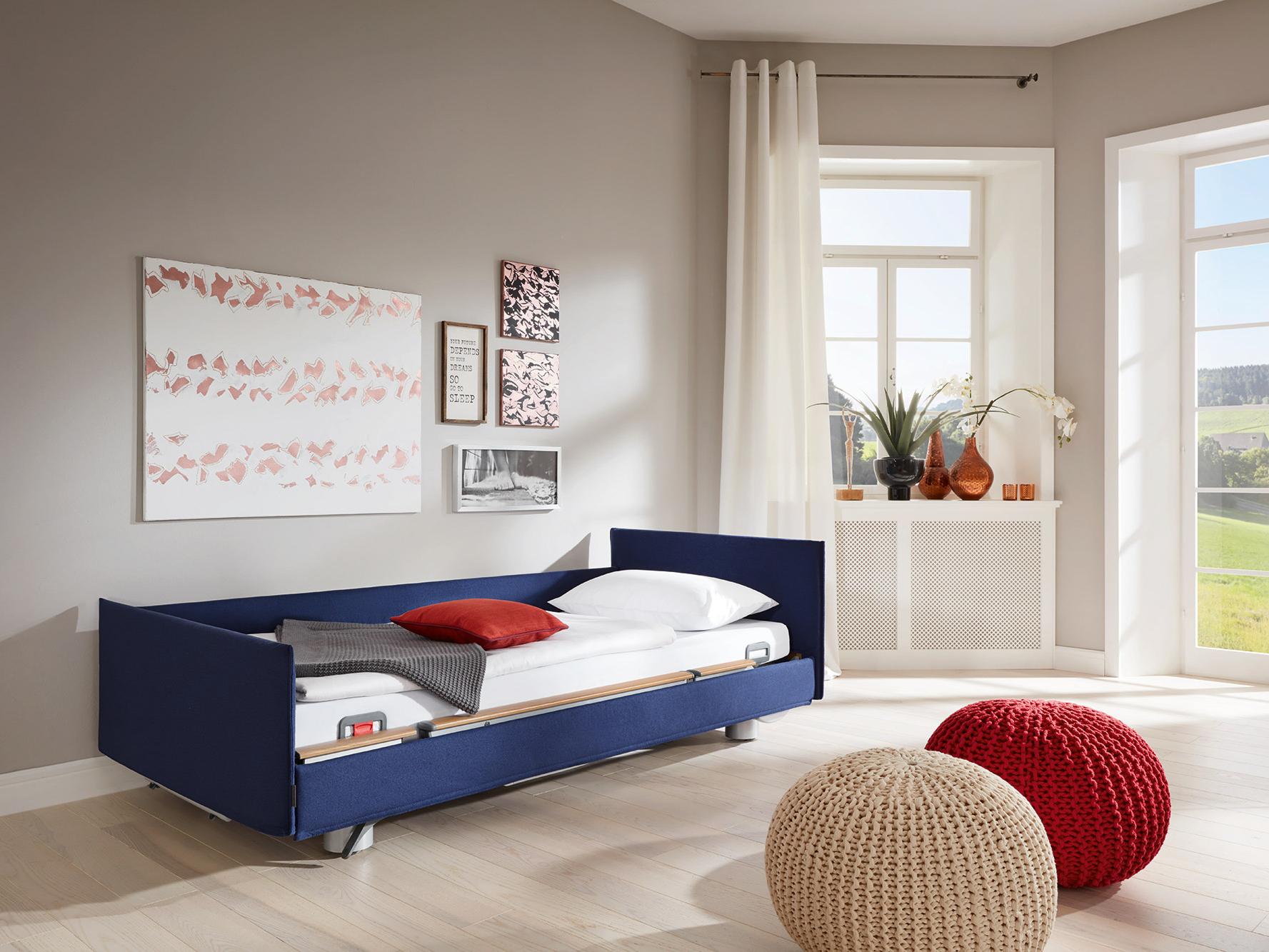
In old age you need strong colors
Claudia Kanz breaks new ground in the facilities of the BeneVit Group
In the facilities of the German BeneVit Group, people in need of care find a new home. The company's innovative house community concept is well received by residents and staff. Kaspar Pfister founded BeneVit in 2004. Today the group operates over 30 locations in 5 German federal states. 2,300 residents live in the house communities. The headquarters of BeneVit is Mössingen south of Stuttgart. We talked with architect Claudia Kanz, the daughter of the company founder, about the strengths of the concept and the tasks that Stiegelmeyer's care beds fulfill.
Mrs. Kanz, please introduce yourself.
I'm 33 years old and an architect. The company BeneVit was founded as a family business by my father. Already during my studies, I worked for BeneVit, because there were of course many architectural issues that I could participate in. What I do today in the company can be summarised as real estate management.
What does your work look like?
One of my tasks is, for example, the location analysis, if communities come to us and are interested in a care facility of ours. We'll look at what's needed first, and then have designs made by external architects. My part in this is that I bring in the special interests of our house community concept and, so to speak, am a translator between the company and the architects. To ensure that our concept works in the desired quality, many structural features must be considered.
Please describe your house community concept.
In our facilities there are no wards, but 4 to 6 apartments. There are 12 to 14 people living in each apartment and working together with staff to shape their everyday lives. We do not outsource any services, everything is done decentrally in the apartments –preparation of meals, cleaning of the rooms, laundry. The residents can actively participate in everyday life, they can peel potatoes or fold clothes. This is how the feeling of being needed again develops. Structurally, our apartments each need a kitchen and several adjoining rooms for the household, since there is no central warehouse and no laundry shop. Our hygiene requirements are very strict too. The occupancy at BeneVit is fully utilised, and our concept attracts employees despite the shortage of skilled workers, because many say, "That's exactly how I always wanted to work."
Do colour concepts play a role in the interior design of your facilities?
Yes, we work with an interior designer and have received many awards. We use very "bright" colours. As you get older, the eye lens becomes cloudy, and it cannot be colourful enough for anything to reach the retina. We use Flotex floors, a textile covering that can be disinfected. Colours were developed exclusively for us – a bright green, a blackberry tone, a bright orange that strongly characterise the room. In addition, our walls are decorated in cheerful, lively colours.
Then the textile softcovers for the Stiegelmeyer care beds are almost tailor-made for your concept.
Yes, I discovered the softcover at a trade fair and was immediately hooked. That's exactly what the market needs. Anyone looking for a special colourfulness and value in the nursing field, always comes up against certain limits, because most manufacturers focus only on the "broad mass". And unfortunately, many are only looking for beige and purple. The softcovers, however, fit exactly to our colour concept. At first glance, they may seem impractical because you need to clean the fabric, but they make a particularly home-like impression. Due to the housing layout in our facilities, the resident rooms are primarily bedrooms and should look like that. Many care beds on the market, on the other hand, have a very clinical appearance. At Stiegelmeyer this is different due to the large choice of décors. In addition, we purchased your beds without side safety sides and without the respective milling grooves in the head and footboards. When the softcovers are pulled over, it really gives the impression of a nice bed for feeling at home.
Which technical aspects are important for you on a care bed – also with regard to the future?
We mainly use low-height beds and use your Out-of-Bed system to minimise deprivation of liberty measures. It would be interesting for the future if the bed could also help us with vital sign measurement – for example, by indicating changes in heart rate or body weight. The determination of this data costs a lot of time in the daily routine, although it could be automated. Also, a technical support in pressure ulcer prophylaxis and a wetness sensor in case of incontinence are desirable. The care industry as a whole has a lot of catching up to do with artificial intelligence. This is not so much a question of money, but the lack of innovation of many stakeholders. At BeneVit, we are very experimental in this area, we talk to the manufacturers and we also look at the products of other industries.
Thank you for the interview!

